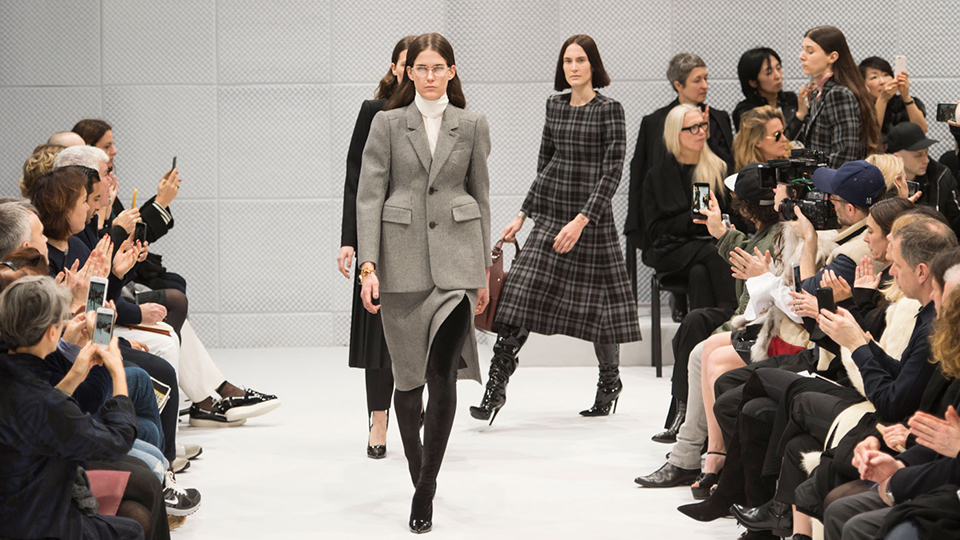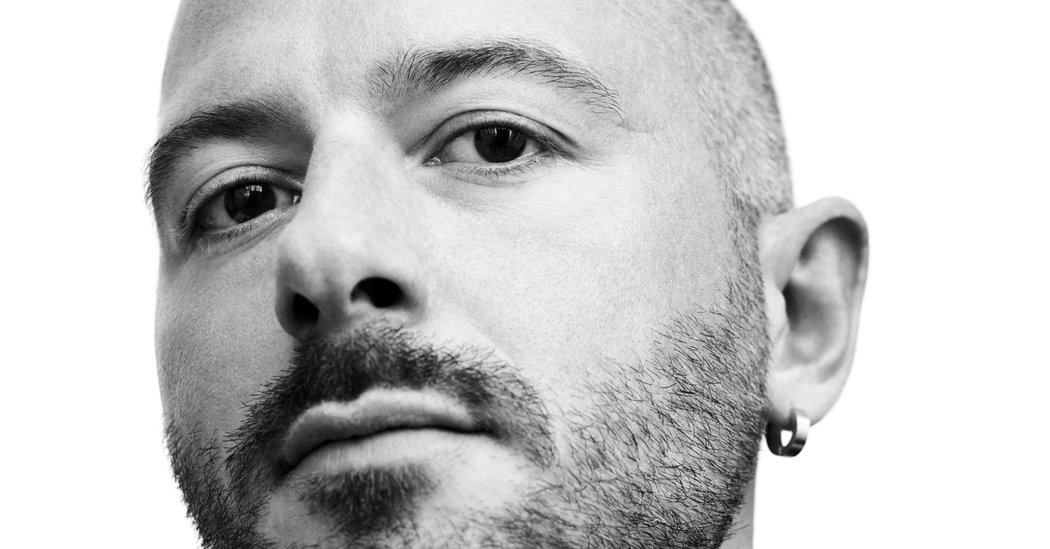Balenciaga AW16 Disappoints with All White Cast

The Balenciaga AW16 show was one of the the most anticipated events of Paris Fashion Week. It was not only the unveiling of a new collection, but also the debut of newly-appointed creative director, Demna Gvasalia, who joined the company in October after Alexander Wang's departure. Editors, journalists, celebrities, and designer peers filed into a former recording studio of Canal + to witness what Georgian-born Gvasalia would bring to such a storied fashion house, given his experience at Maison Martin Margiela, Louis Vuitton, and his own label, Vetements.
The clothing did not disappoint — off-the-shoulder puffer jackets and plaid suits slightly padded at the waist were a respectful nod to Mr. Balenciaga’s cocoon silhouettes, proof that Gvasalia had done his homework. On the other hand, the silk floral dresses reminiscent of Salvation Army finds were an elevated take on Vetements’s street-wise aesthetic. Yet for every laudatory review of the designs, a number of critics were quick to point out Gvasalia’s blatant use of an all-white cast of models, a choice that seems at odds with his progressive view of fashion as a reflection of reality, not fantasy.
Gvasalia has professed he finds inspiration in the people he sees around his neighborhood, in the Ninth and Tenth Arrondisements, in Paris. In an interview with Cathy Horyn for The Cut Gvasalia said, “For me, observing people in the street is very important. In Paris, you have a lot of characters. And those people who might inspire me, I don’t see many of them on the Left Bank.” Considering that this season neither Balenciaga nor Vetements included a single model of color, such an adamant insistence on Gvasalia’s appreciation of the diverse Right Bank culture is puzzling. Even more puzzling, though, is Gvasalia’s choice to instead push a different type of runway diversity, casting non-models who do not fit the sample size.
Today, for upcoming labels like Vetements as well as industry staples like Balenciaga, the luxury market that they cater to is increasingly non-white. The Chinese market, for example, has become the world's leading contender for luxury good consumption, and the Middle East has become the world's leading consumer base for haute couture. Gvasalia's predecessor at Balenciaga, Alexander Wang, featured models of color in each of his runway presentations for the fashion house. During his tenure Balenciaga boasted an estimated $390 million in annual revenue.

Demna Gvasalia. Image Credit: The New York Times.
In response to the criticism, Gvasalia gave The New York Times an evasive explanation saying, “What does attitude look like? Is it in the body, the clothes, the mind?” Unfortunately, an all-white runway cast is a clear depiction of an attitude of exclusion. It is a failure to accurately represent the world we live in. In its seasonal Runway Diversity Report, Fashionista reported that of all the AW 2016 runways — from New York, London, Paris, and Milan — only 24.75% of the models were people of color.
When the items from Balenciaga's AW16 collection become available for purchase in six months, it will be interesting to see whether the collection is commercially viable. In the meantime, designers like Gvasalia should know that the world is not only watching — it is purchasing. And that world is not predominantly white.





